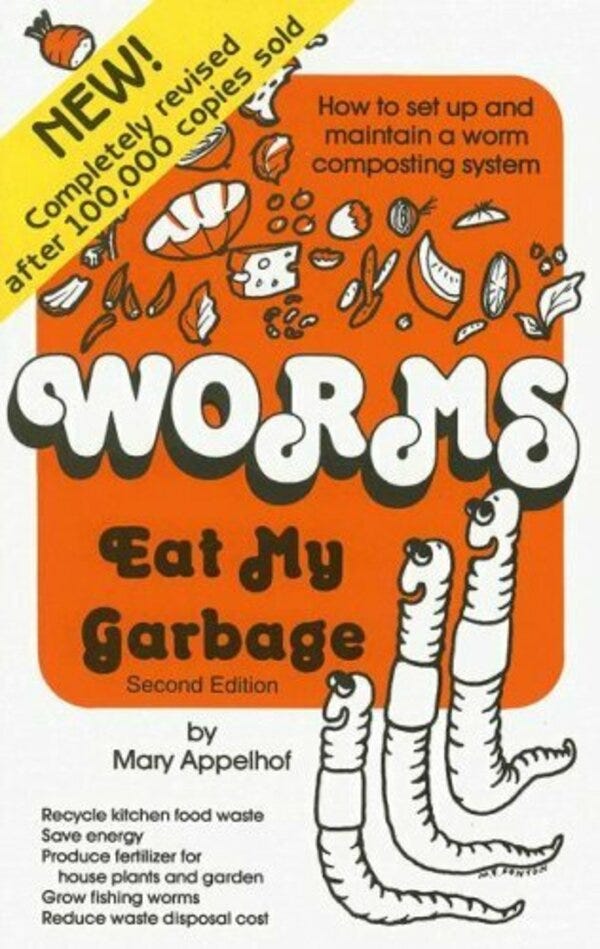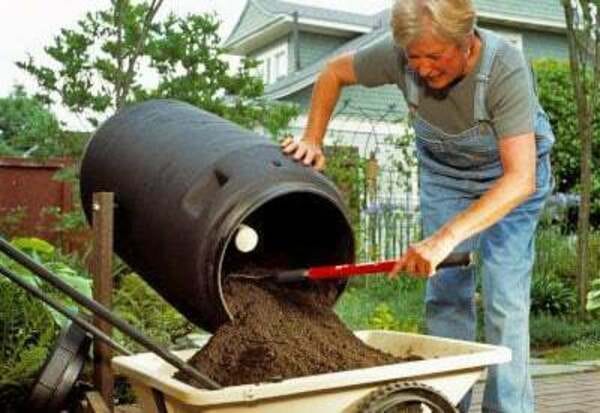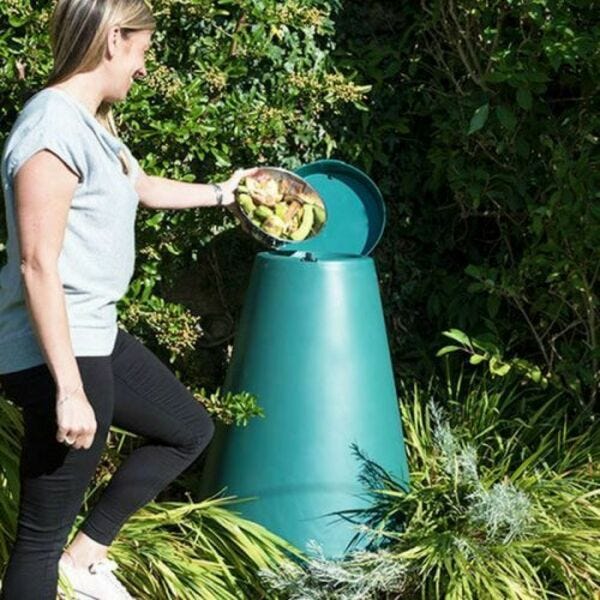Composting
Tools for Possibilities: issue no. 17
Once a week we’ll send out a page from Cool Tools: A Catalog of Possibilities. The tools might be outdated or obsolete, but the possibilities they inspire are new. Sign up here to get Tools for Possibilities a week early in your inbox.

Minimal worm compost
Worms Eat My Garbage
Worms convert kitchen scraps into highpotency garden fertilizer. In the process they multiply, and can be used for fish bait or for chicken snacks. The worms reduce your trash load. The fancy name for this is “vermicomposting.” It requires little beyond a modified wooden box or plastic tub in the kitchen, basement or backyard. This perennially best-selling, and now up-dated, book will tell you all. Wormpoop.com is an all-worms site that sells worms (by the pound) and worm poop fertilizer (by the gallon), and worm raising information and supplies. – KK
- Whichever you start with, breeders or bedrun, when they produce more worms than the garbage you are feeding them will support, many will get smaller, some will slow reproduction, and others will die. Eventually, no matter how many worms you start with, the population will stabilize at about the biomass that can be supported by the amount of food they receive.
- Any vegetable waste that you generate during food preparation can be used, such as potato peels, grapefruit and orange rinds, outer leaves of lettuce and cabbage, celery ends, and so forth. Plate scrapings might include macaroni, spaghetti, gravy, vegetables, or potatoes. Spoiled food from the refrigerator, such as baked beans, moldy cottage cheese, and leftover casserole also can go into the worm bin. Coffee grounds are very good in a worm bin, enhancing the texture of the final vermicompost. Tea leaves, even tea bags and coffee filters, are suitable.
- Still another method for harvesting worms is the divide and dump technique. You simply remove about two-thirds of your vermicompost and dump it directly onto your garden’s surface. No digging nor turning; no muss, no fuss. Add fresh bedding to the vermicompost still left in the box. Enough worms and cocoons usually remain there to populate the system for another cycle.
- From Wormpoop.com. The worm bed is 36” high (about waist level), reducing stress on the back and legs from bending. This worm bed has four removable partitions for easy access for feeding and harvesting the worms and wormpoop castings (also called Vermicompost). It allows the person working with the worms to do so with less effort. It also helps reduce the workload when harvesting the worms. Adding Vermicompost to soils aids in erosion control, promotes soil fertility, stimulates healthy root development in plants. This life cycle is the process of things being born, living, dying, and being reborn again. This is nature’s way of recycling and keeping the earth in balance.

Varmint-free compost maker
This is a great composter, made out of a recycled pickle drum. It comes via UPS and you assemble it. It has endover- end tumbling action (unlike the larger, more expensive drums that roll horizontally) and it has solved the problem I’ve had for years of composting kitchen scraps and fending off coons, skunks, foxes, and possums. Here it’s locked up and impenetrable. It takes a while to get it working right, with the proper amounts of green stuff, dry stuff, and soil organisms. I’ve transferred some worms from my old compost bin into it, to get them processing the organic matter. – Lloyd Kahn

Omnivorous composting
I was more burdened by wet garbage than I thought, and more relieved than I expected by a fiendishly simple device called the Green Cone.
Regular composters are notoriously picky: no bones, no meat, no oil, no avocado pits or shells, no citrus peels, no dairy products. The Green Cone happily devours all that stuff, which means that pretty much all your kitchen waste can go in it, right now. File and forget.
All you need is some yard and a spot that gets sunshine. The Cone’s perforated plastic basket is sunk two feet into the ground. The Cone stands 28 inches above the ground, collecting sun warmth to encourage the bacteria down below who are chowing on the garbage and seeping the resultant nutrients into the soil. Thanks to the ground seal around the basket, there’s no smell at all, except when you open the top of the Cone to add more yummy garbage for the microbes.
Garden wastes should not go in the Cone, because they would overwhelm it with volume. Nor should paper or plastic products, which is about all you’ll have left in your now light and odorless kitchen trash bin. – Stewart Brand
01/16/23





